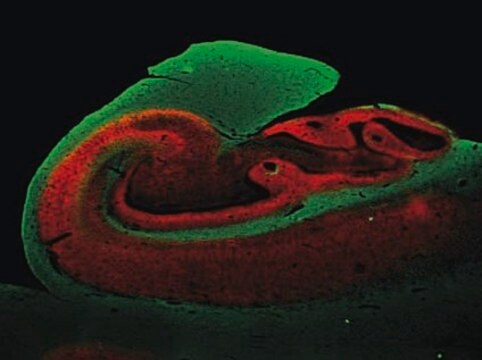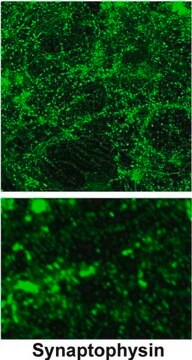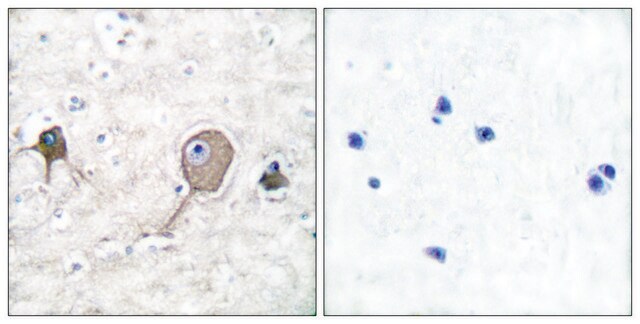MAB5258A4
Anti-Synaptophysin Antibody, clone SY38, Alexa Fluor™ 488 Conjugate
clone SY38, from mouse, ALEXA FLUOR™ 488
Synonim(y):
Synaptophysin, Major synaptic vesicle protein p38
About This Item
Polecane produkty
pochodzenie biologiczne
mouse
Poziom jakości
białko sprzężone
ALEXA FLUOR™ 488
forma przeciwciała
purified antibody
rodzaj przeciwciała
primary antibodies
klon
SY38, monoclonal
reaktywność gatunkowa
mouse, human
reaktywność gatunkowa (przewidywana na podstawie homologii)
bovine (immunogen homology)
metody
immunohistochemistry: suitable
izotyp
IgG1
numer dostępu NCBI
numer dostępu UniProt
Warunki transportu
wet ice
docelowa modyfikacja potranslacyjna
unmodified
informacje o genach
human ... SYP(6855)
Opis ogólny
Specyficzność
Immunogen
Zastosowanie
Neuroscience
Neuronal & Glial Markers
Jakość
Immunohistochemistry Analysis: A 1:100 dilution of this antibody detected Synaptophysin in adult mouse brain tissue.
Opis wartości docelowych
Postać fizyczna
Przechowywanie i stabilność
Komentarz do analizy
Adult mouse brain tissue
Inne uwagi
Informacje prawne
Oświadczenie o zrzeczeniu się odpowiedzialności
Nie możesz znaleźć właściwego produktu?
Wypróbuj nasz Narzędzie selektora produktów.
Kod klasy składowania
12 - Non Combustible Liquids
Klasa zagrożenia wodnego (WGK)
WGK 2
Temperatura zapłonu (°F)
Not applicable
Temperatura zapłonu (°C)
Not applicable
Certyfikaty analizy (CoA)
Poszukaj Certyfikaty analizy (CoA), wpisując numer partii/serii produktów. Numery serii i partii można znaleźć na etykiecie produktu po słowach „seria” lub „partia”.
Masz już ten produkt?
Dokumenty związane z niedawno zakupionymi produktami zostały zamieszczone w Bibliotece dokumentów.
Nasz zespół naukowców ma doświadczenie we wszystkich obszarach badań, w tym w naukach przyrodniczych, materiałoznawstwie, syntezie chemicznej, chromatografii, analityce i wielu innych dziedzinach.
Skontaktuj się z zespołem ds. pomocy technicznej








